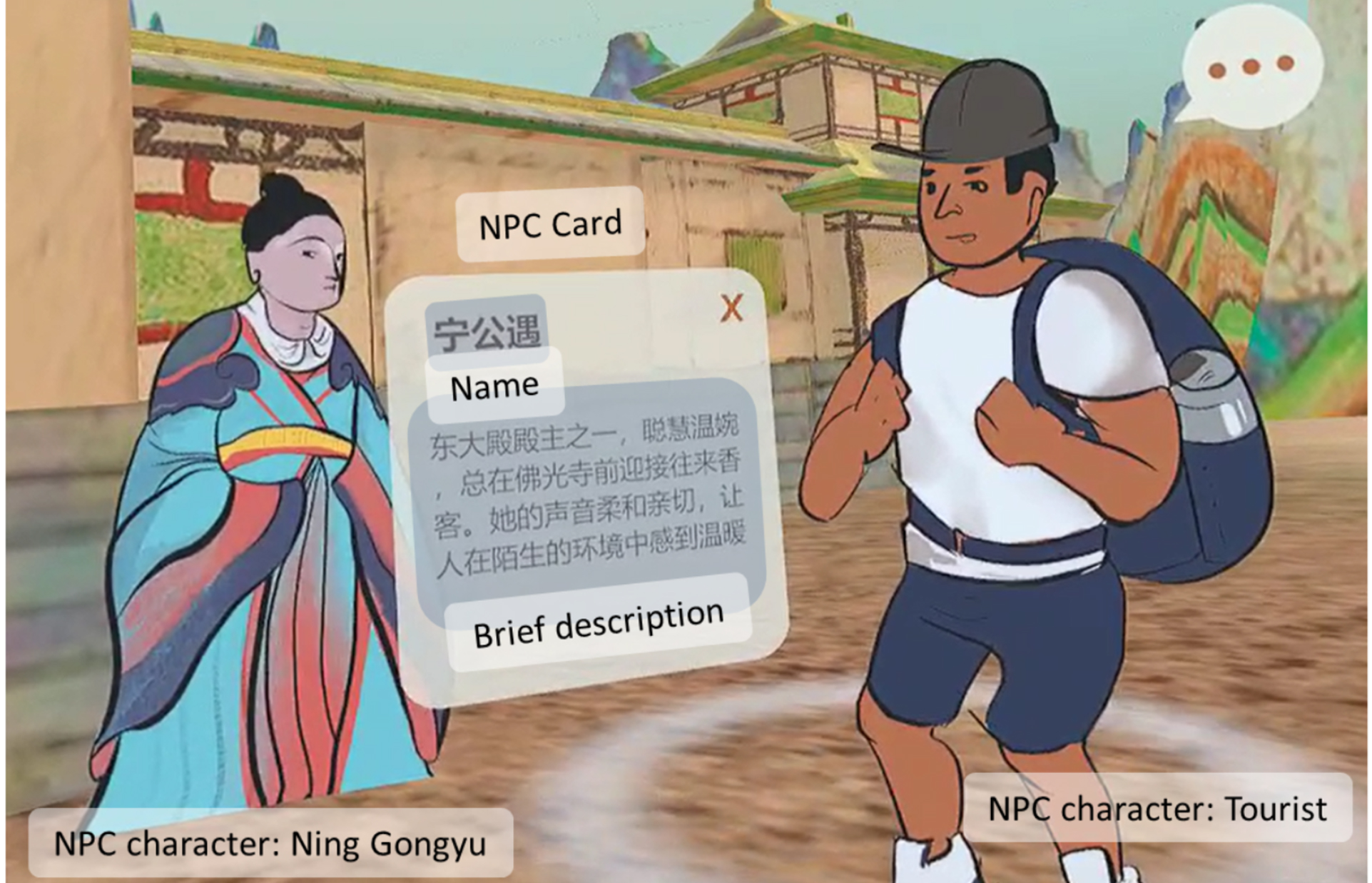
NPC Cards in VR Cultural Heritage
This study examines how NPC information cards in VR enhance emotional engagement and reduce VR sickness, while supporting a balance between exploration and guidance in cultural heritage experiences.
This study investigates the impact of information integration in immersive virtual reality (VR) narratives on user experience during cultural heritage revitalization. Within a self-developed VR system for Dunhuang murals, we integrated non-player character (NPC) information cards as auxiliary narrative tools to balance immersive experiences with effective information acquisition. A mixedmethods experiment involving 33 participants evaluated their effectiveness. We found that NPC information cards significantly enhanced users’ emotional states and self-efficacy, while mitigating VR Sickness. Although their direct contribution to knowledge acquisition and immersion was limited, they strengthened the emotional connection between users and the virtual environment, achieving a balance between autonomous exploration and systematic guidance. User feedback emphasized the need for instant and intuitive information, as well as the desire for comprehensive and highly task-oriented content. These findings expand the theoretical boundaries of VR narrative design and provide insights for designing user-friendly VR experience aids oriented towards cultural heritage.